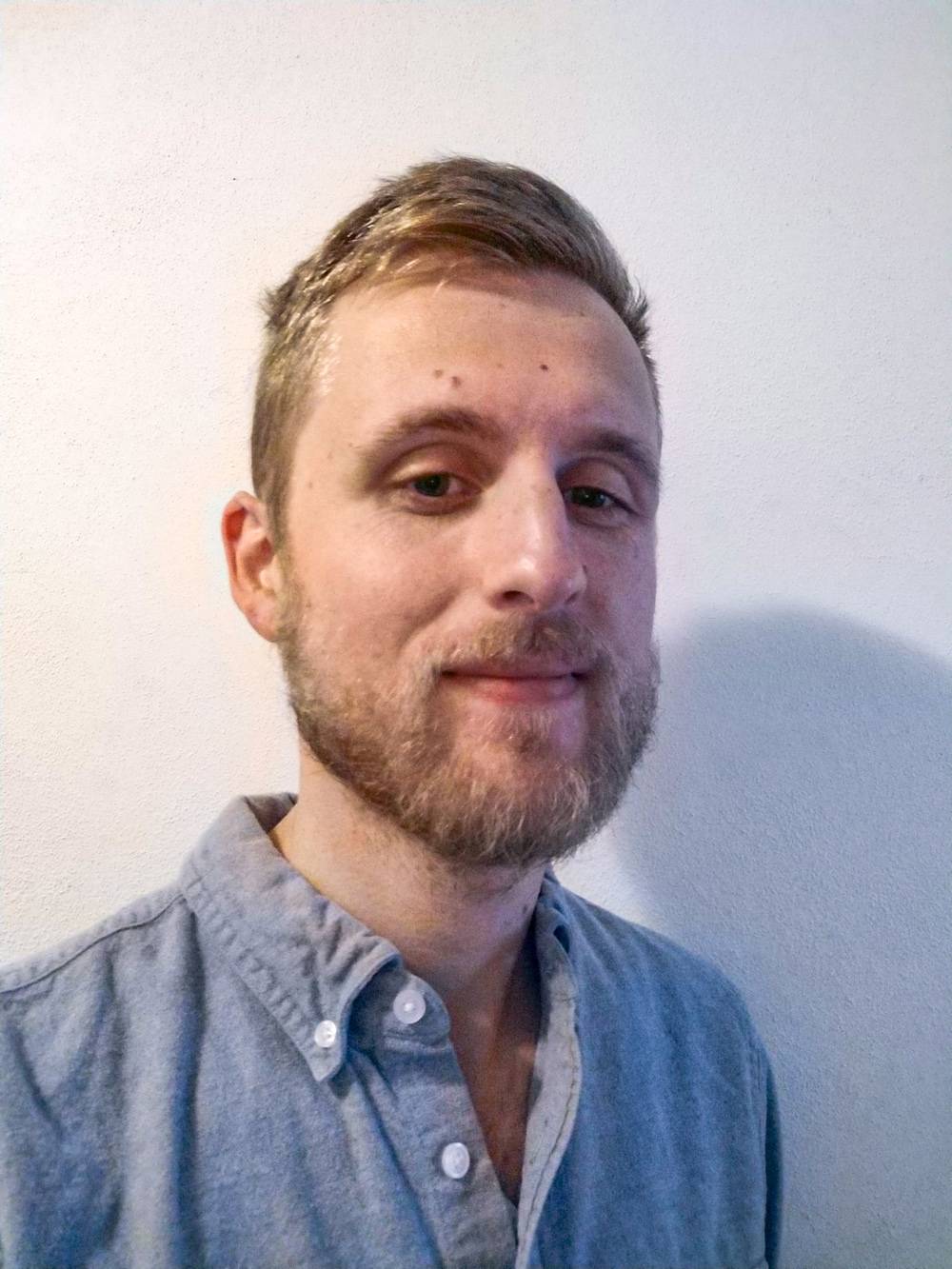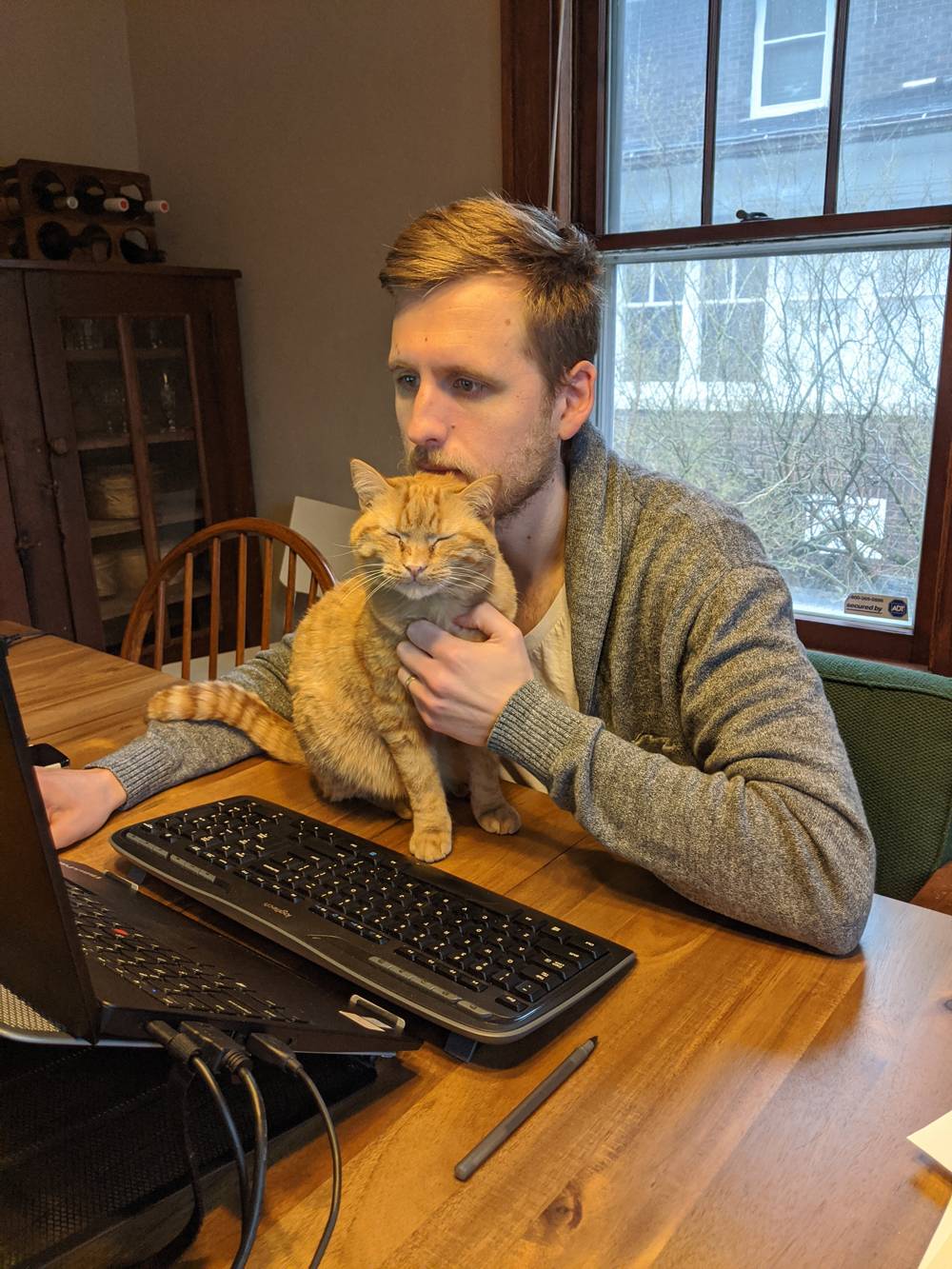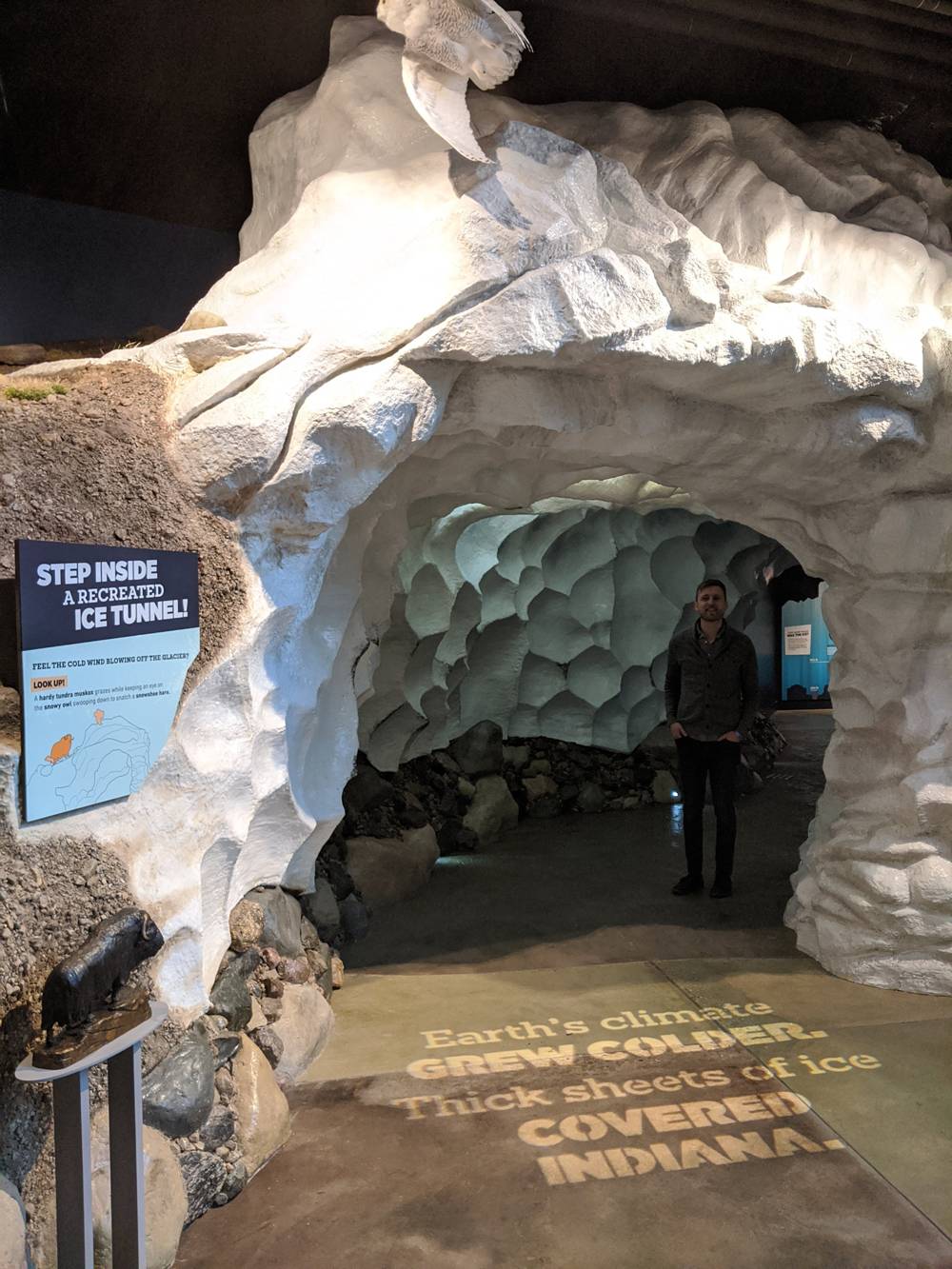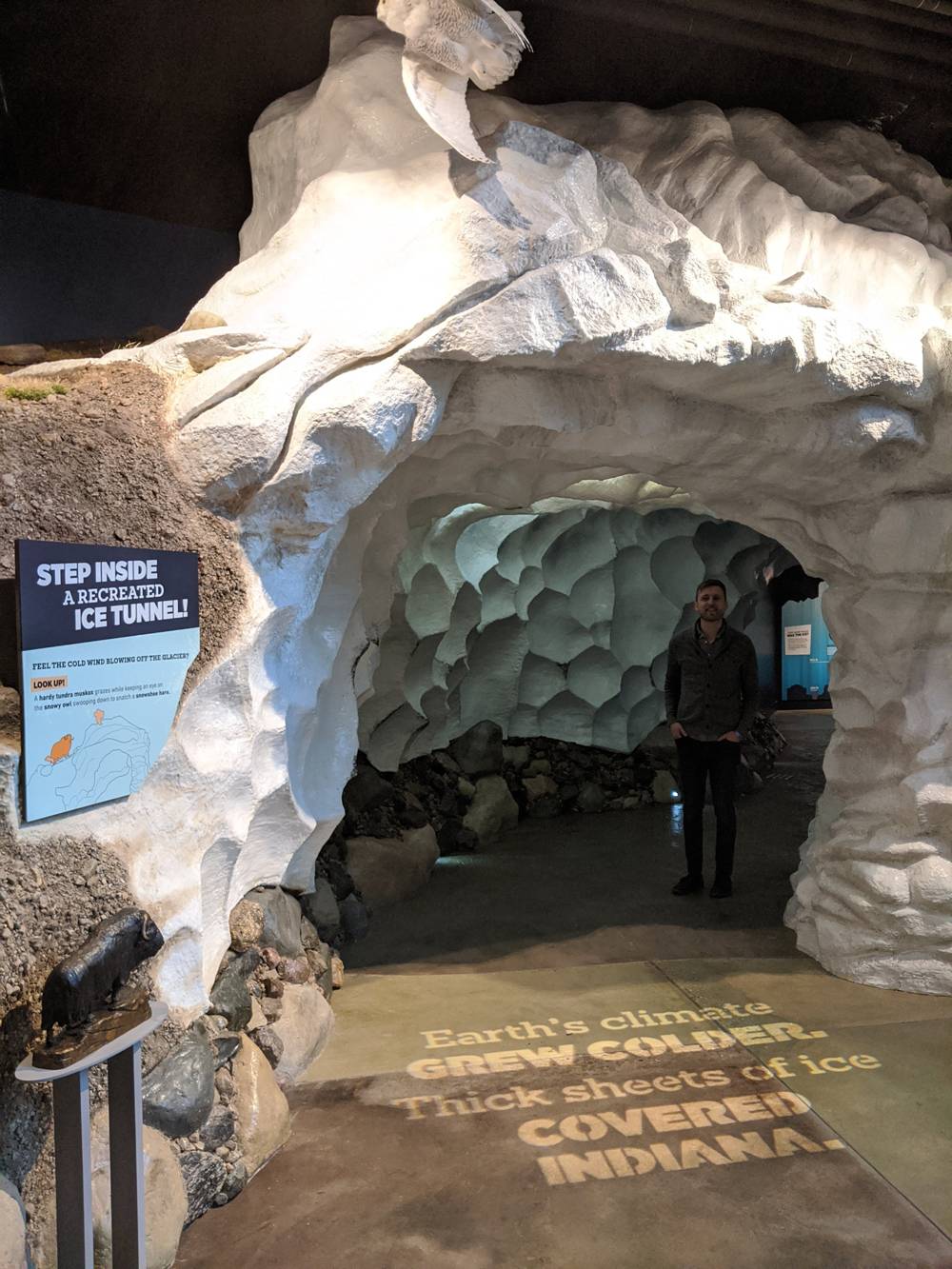Have you ever wondered about the people who build the exhibits you see at museums? I’m not talking about fine art — those artist lineages are very clear. I’m referring to the installations of animals and habitats and natural history things. As you can imagine, those things are carefully considered and constructed. There is a balance of providing something interesting (and accurate) to look at with enough information that you have learned something, but not too much that your brain clicks into overdrive and turns off. It’s not an easy ask.
Taylor Studios in Rantoul is a company that designs and builds exhibits for institutions. It’s a relatively small company that completes big projects, realizing projects from idea to installation. I recently emailed with Jonathan Hafer, Design Manager at Taylor Studios. We talked about his job, the projects Taylor Studios is working on, and what he likes to do in C-U.
+++
Smile Politely: Thanks for taking the time to email with me! Can you introduce yourself to readers?
Jonathan Hafer: My name is Jonathan Hafer, and I’m the Design Manager at Taylor Studios in Rantoul.

Photo courtesy of Jonathan Hafer.
SP: What does Taylor Studios do, how long have you been there, and what does your job entail?
Hafer: Physically, Taylor Studios designs and builds exhibits for museums and other institutions, but our purpose is to help our clients discover, articulate, and share the stories of their places, people, and artifacts.
I’ve been part of Taylor Studios for a bit over a year now. As Design Manager I’m responsible for a wide range of things, from the mundane like scheduling and operating procedures, to less tangible things like coaching the design staff to grow as creators and collaborators. Much of my day is focused on how and why we do our jobs, and how we can do them better. That could be reviewing designs and providing feedback, working with managers of other departments or members of my team to create policy, or attending an event with others in the industry.
SP: What does the design process look like? Does it start with content, or with some of the more practical considerations like location or budget?
Hafer: It starts with content and budget equally. It’s a bit like grocery shopping; the budget sets your limitations, but the content fills the cart. You might shop for a hundred pounds of rice, or a fancy cut of meat and an expensive wine, depending on who you are and who you want to feed. It’s our job to learn our clients’ needs and provide the best value for them and their visitors.
The process is highly collaborative with the client, as they are the experts on their location, content, and visitors, and we’re experts at creating accessible, engaging, inspiring, and memorable experiences. This starts with collecting information about the resources the client already has, but kicks off in earnest with a three day workshop with our design team and the client team at their site. The workshop’s goal is to help the client articulate what they like and dislike stylistically, and to arrive at what we call the central theme. The central theme is a simple statement that encompasses both the purpose and content of the exhibit, like a thesis statement. We refer back to this as a guide whenever we need to make decisions about how to prioritize content and where the budget is best spent.
Afterwards, we provide increasingly detailed designs in three phases and get detailed client feedback at the end of each phase. These consist of sketches and 3D models of the exhibit space and elements, content outlines and copy samples, graphic design styles and colors, material samples, and more. At each phase the design team meets with our estimating department to make sure that we’re creating a design that can be built within the client’s budget. We also regularly meet with our fabricators to draw on their experience. From there the project moves on to our construction detailers and off to fabrication.
SP: How has the COVID-19 pandemic affected Taylor Studios?
Hafer: Compared to other industries and businesses we’ve been quite fortunate so far. There are a lot of challenges and uncertainty, but also a number of positive effects. Working from home has helped to emphasize our humanity and humility, and strengthened a sense of camaraderie within our company and with our clients. It’s hard to take yourself too seriously on a video conference at your kitchen table. I’ve met everyone’s kids and pets. We’ve implemented collaborative software much more quickly than we otherwise might have, and we’ve proven our ability to be flexible in how and where we work. Networking and sharing resources with others in the industry has become easier as conferences become webinars.

Photo courtesy of Jonathan Hafer.
SP: What do you think the long(er) term effects will be on museum spaces?
Hafer: It’s difficult to predict. In the relatively short-term of the next year(s) before a vaccine, museums and visitor centers are attempting to answer the same questions as other public spaces as they reopen. What will make people feel safe to visit? How many people can safely visit at once? What are new cleaning procedures? How do we deal with high traffic or high touch areas?
In the long term, funding and visitation for institutions loom as large uncertainties. I think the value of the physical exhibit space won’t go away, but it’s likely that museums will branch out in the services they provide and how they reach their audiences, similar to the way public libraries have evolved to meet the needs of their communities. There was already a trend away from defining a museum just as a place that holds vaguely related stuff, and towards viewing these institutions more broadly as caretakers and sharers of their resources. I think this trend will accelerate.
SP: Do you think that there will be a move to interactive/engagement heavy web-based museum design? Is that a consideration Taylor Studios is making in planning for the future and future projects?
Hafer: Many institutions are seeing increased engagement with social media and more web traffic, as physical visitation isn’t possible. It will be interesting to see if this continues or not once people are able to be physically present again.
Over the last few decades, audiovisual elements like touch screens and projections were held up as the future of exhibit design, but we’ve found the most popular and enduring elements to be physical models and simpler physical interactives. Web-based exhibits and virtual tours could be the future, or they could end up feeling dated and irrelevant in ten years. Only time will tell.
Having said that, we are of course always exploring new technology and avenues for telling the stories our clients have to tell. We don’t like to sit still, or put ourselves in a box.
SP: Are you able to tell readers about any projects you’re working on now?
Hafer: The Bob Ross Experience in Muncie, Indiana is a fun one. It will be housed in, and include a recreation of, the original studio where they filmed Bob’s show The Joy of Painting. We’re also working on an exhibit holding one of the rarest fossils in the world: a mummified dinosaur with fossilized skin still intact. We had part of the fossil scanned and 3D printed, so visitors will be able to feel the skin of a dinosaur that’s been dead for 65 million years. Locally, we’re designing an exhibit for the Roger Adams Laboratory at the University of Illinois Department of Chemical and Biomolecular Engineering, and installed an entryway sculpture and informational kiosk at Meadowbrook Park in Urbana a few months ago.

Photo courtesy of Jonathan Hafer.
SP: What’s been the most rewarding part of your job?
Hafer: I’d say that’s a tie between collaborating with my coworkers and the sheer variety of topics I get to experience and learn about on the job. My colleagues are experts in sculpture, research, design, business, marketing, architecture, construction, electronics, and much more. They’re wonderful people and I continue to learn from them every day. Through our projects I’ve learned about a huge variety of plants, animals, ecosystems, science, history, and people. It’s a blast.
SP: How do you relax in your downtime?
Hafer: I have a bit of an addiction to creative hobbies. Whenever I pick up a new interest my wife likes to ask me if it comes above or below making lamps. I’ve never made a lamp. Yet. That’s become the bar for how serious I am about a new pursuit. Items that have stayed above the making-lamps-line are generally visual art in a variety of media, and composing, playing, and recording music. I’m very interested in incorporating technology into my creative process and like to build my own computers.
Also, I collect houseplants and find tending to them very relaxing. I haven’t counted for a while but we probably have somewhere over fifty but under one hundred in the house now.
SP: You’ve been in C-U for about two years now, right? What have you enjoyed most about living here?
Hafer: That’s right. Before moving here I lived in a small town of about 2,000 people in central Pennsylvania for a year, and before that I lived in Philadelphia for about 15 years. For me, C-U has the perfect blend of small town and big city.
I’ve enjoyed the complimentary flavors of the Champaign and Urbana public libraries. I’ve enjoyed the strong opinions about whether clockwise, or counter-clockwise, is the correct way to walk around Meadowbrook Park. I’ve enjoyed being able to drive across town in 15 minutes or walk across it in four hours with equal ease. I’ve enjoyed ordering Chinese, Thai, Vietnamese, Indian, Mexican, Zambian, and Japanese food. I’ve enjoyed shows at the Krannert Center for the Performing Arts by students and world-renowned musicians. I’ve enjoyed spontaneous trips to St. Louis for baseball, Chicago for friends, and Indianapolis for a fancy dinner. I’ve enjoyed the local popularity of custom license plates. I’ve enjoyed the wild seasonal swings from surreal cold to mouthy heat and humidity. I’ve enjoyed the rotating cast of songbirds in my yard and throughout my quiet neighborhood with brick streets and hundred-year-old trees. I’ve enjoyed conversations with artists, writers, filmmakers, engineers, mathematicians, scientists, farmers, civil servants, entrepreneurs, historians, and linguists.
SP: What are you most looking forward to doing in C-U once the pandemic is more controlled?
Hafer: In thinking about this question I realize I’m mostly looking forward to sharing food with people. Feasts with big groups passed around the lazy Susan at Golden Harbor. Seeing what’s in season each week browsing the farmers’ market. Taco Tuesday with my coworkers at Agave in Rantoul. Date night sushi at Sakanaya. Exchanging dinner visits with friends.








